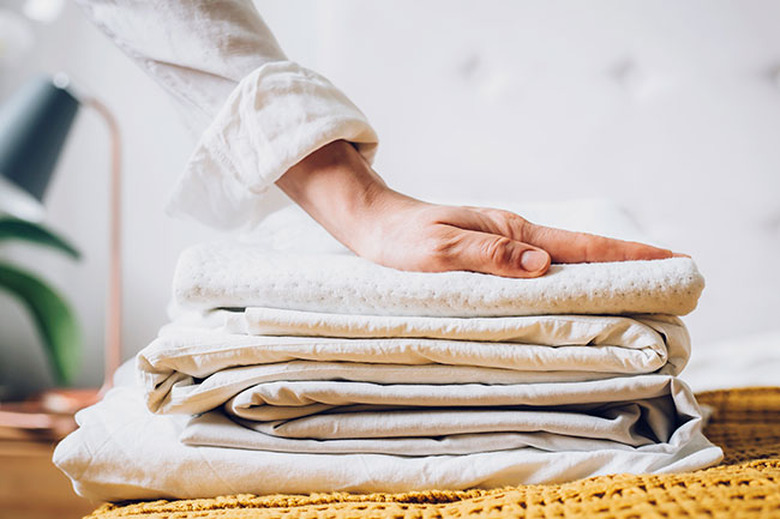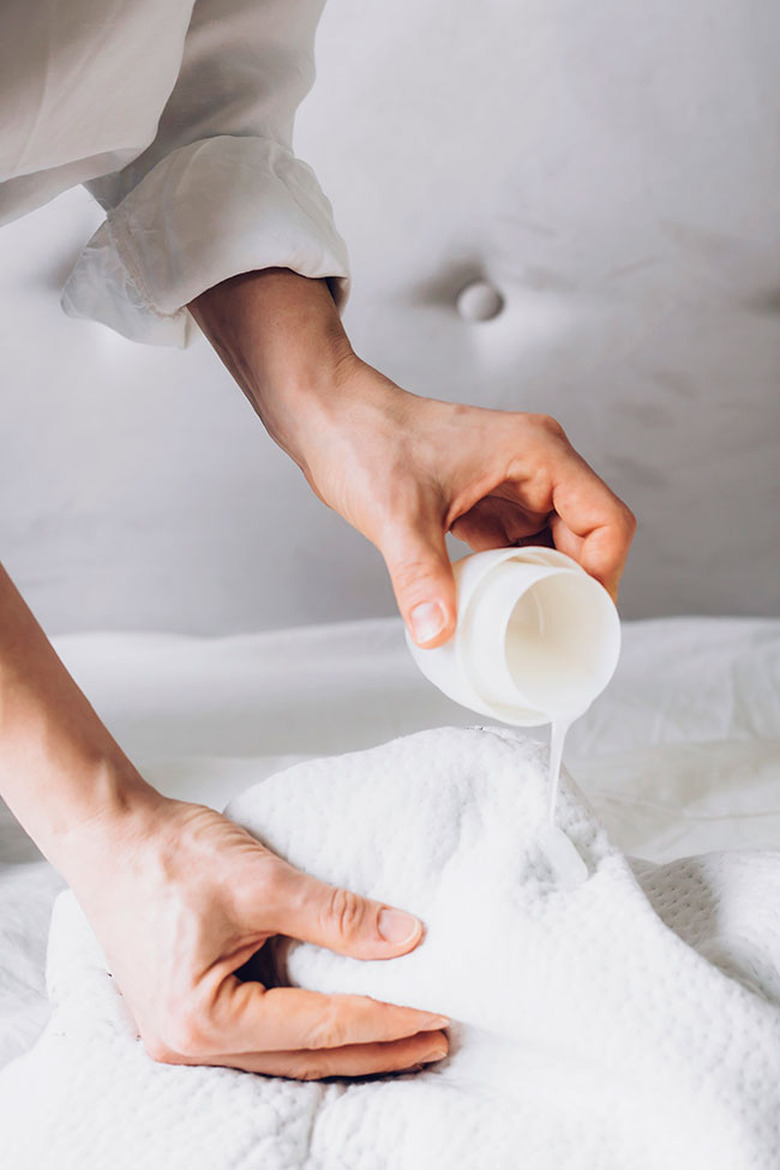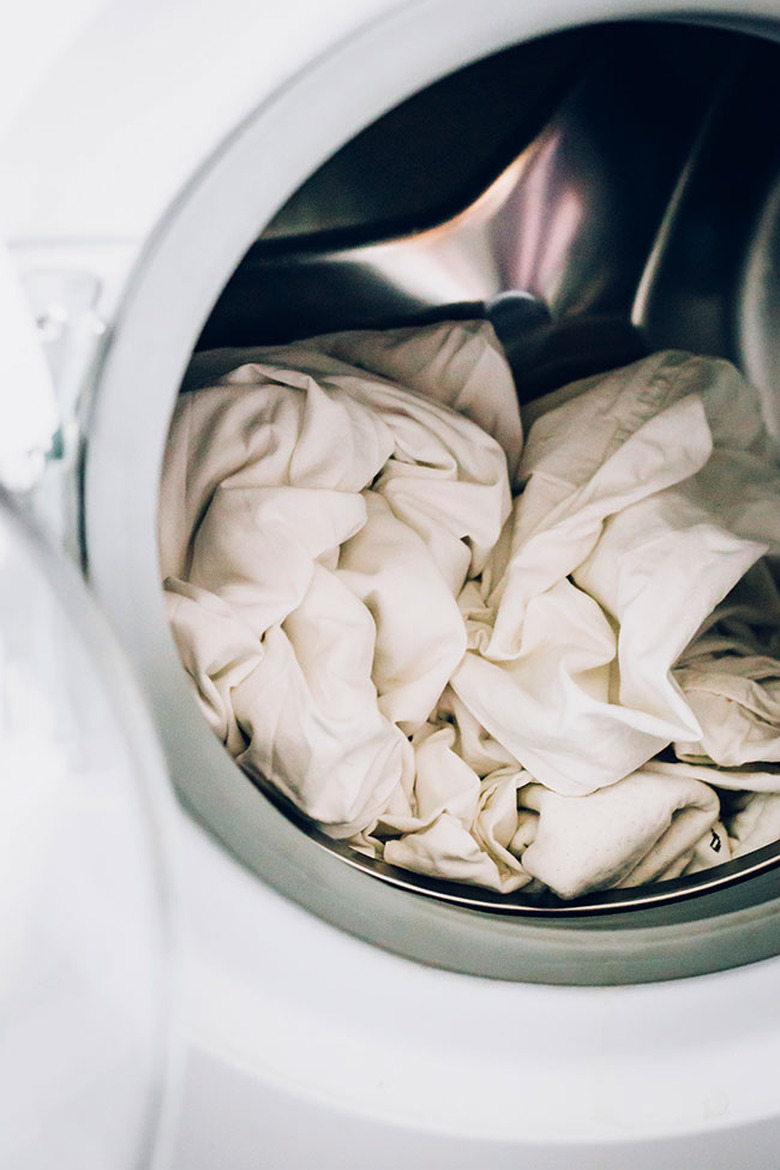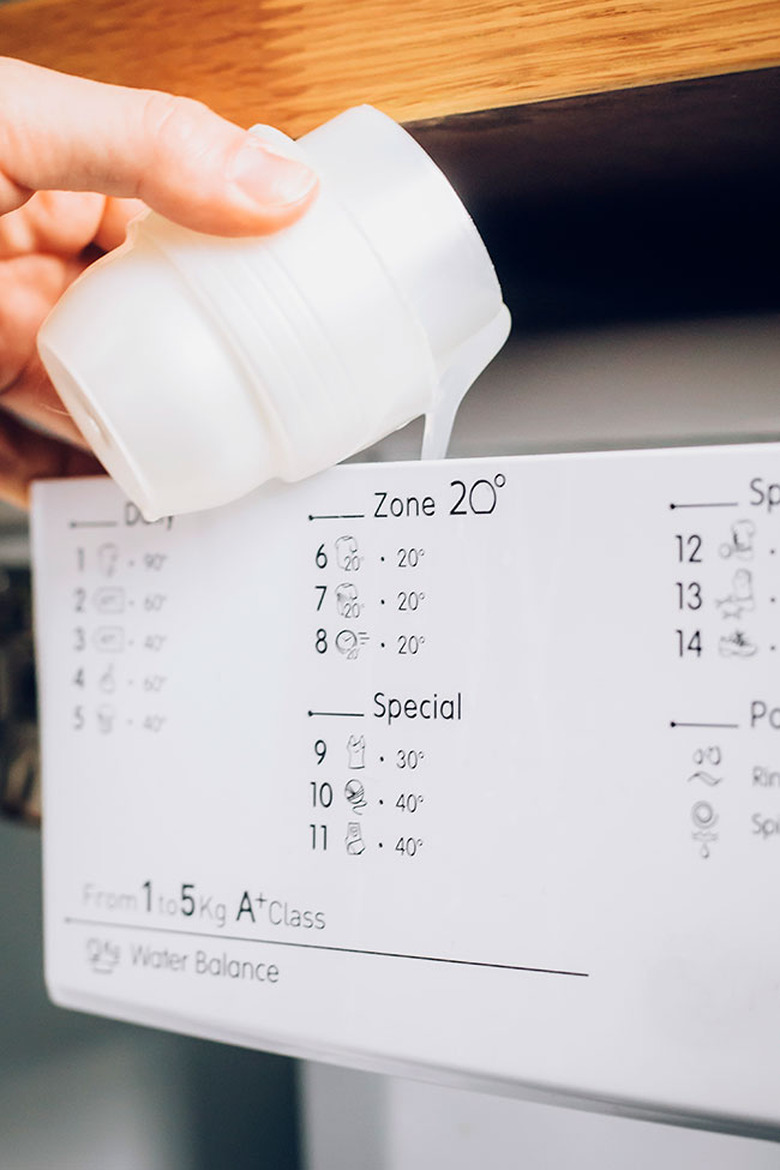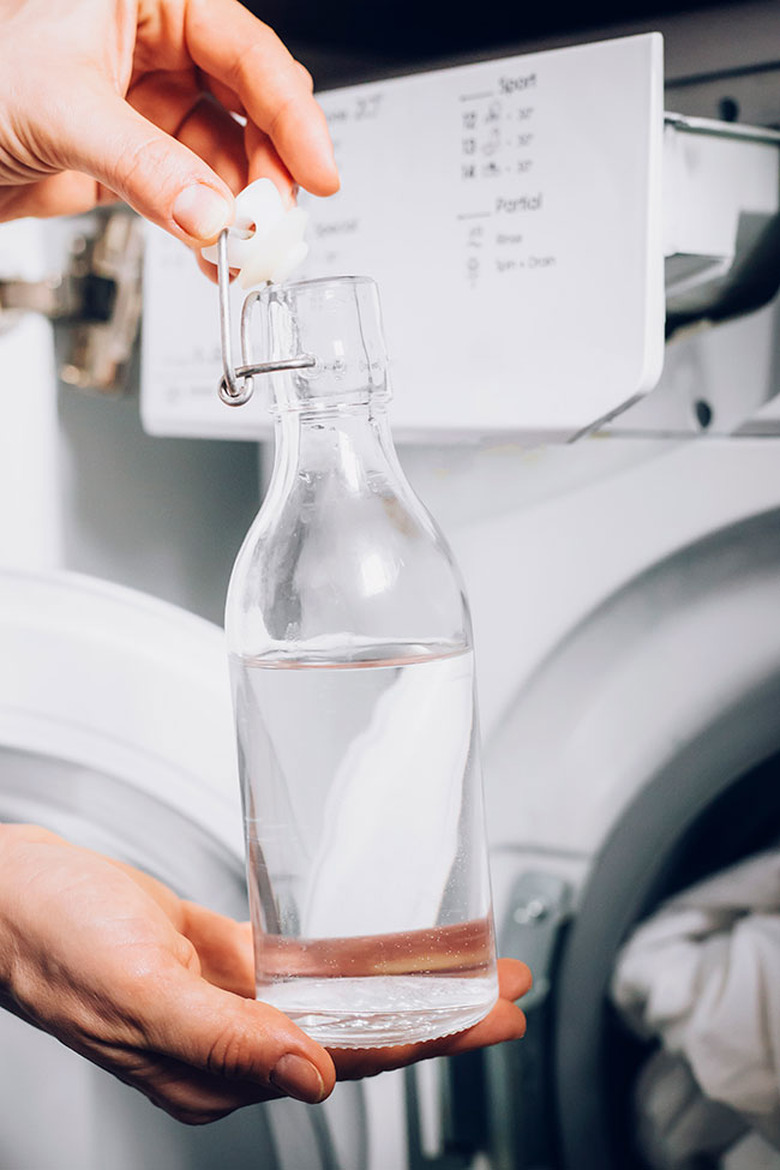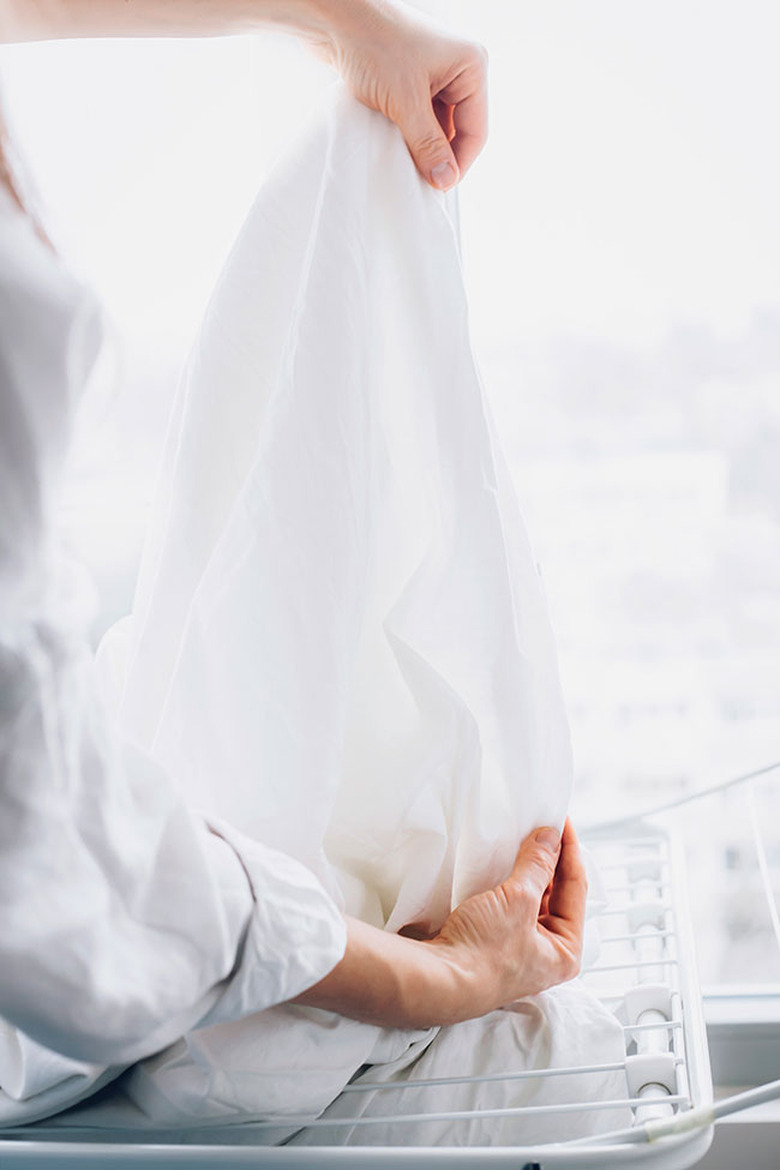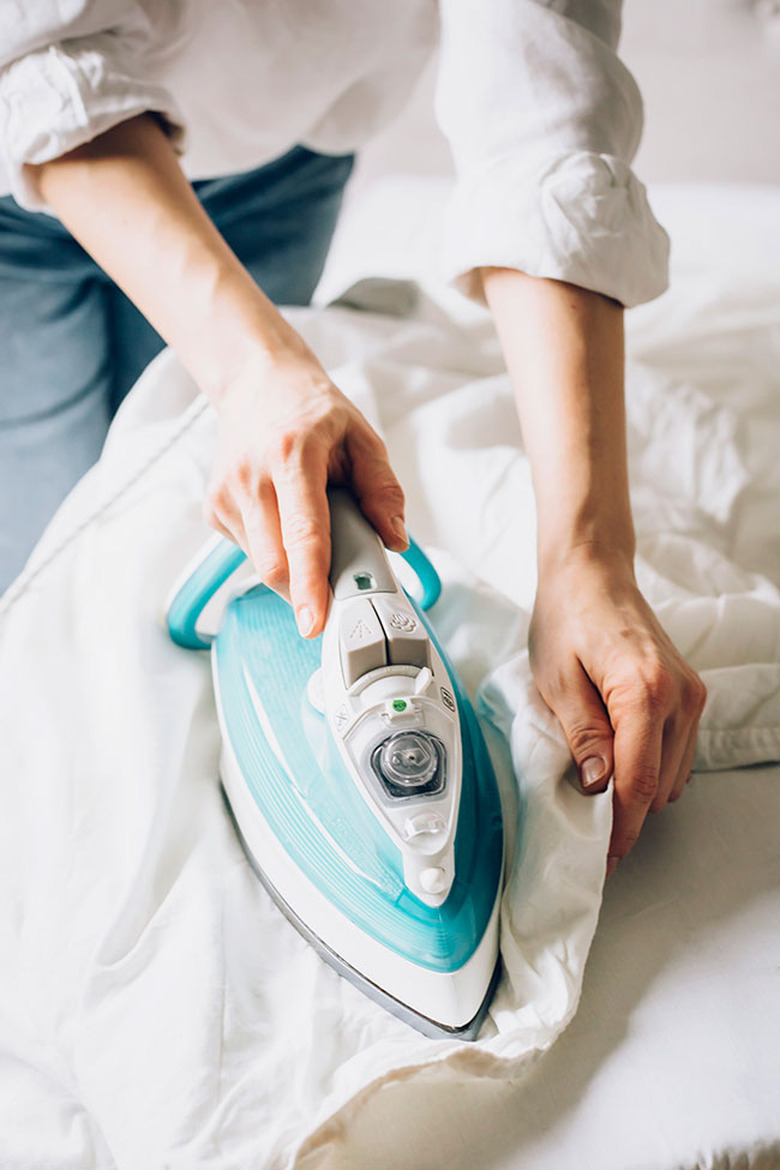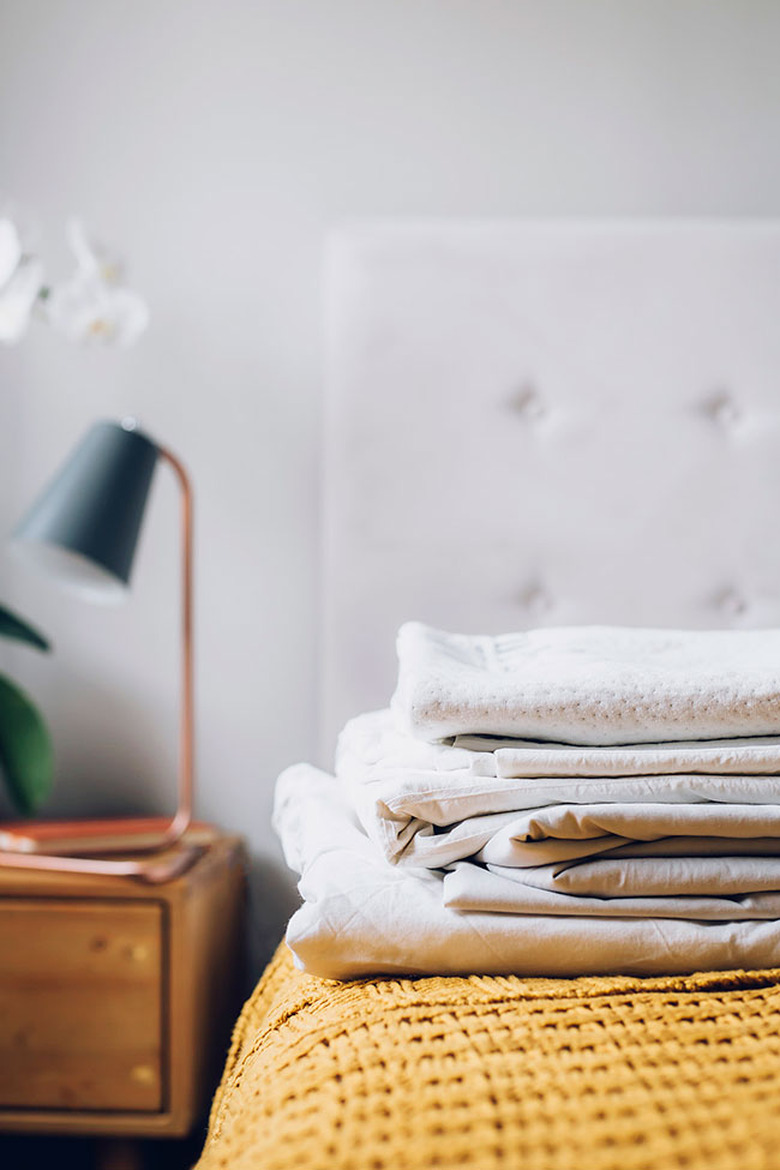Here's How You Really Should Be Washing Your Bed Sheets, According To Cleaning Experts
We may receive a commission on purchases made from links.
Whether you prefer sleeping on satin, Egyptian cotton, silk, jersey, or linen, there's nothing like the soothing scent and feel of clean sheets. We asked top cleaning and sleep experts how to wash sheets the right way — so you can sleep easy knowing your bed linens will stay fresh, clean, and undamaged. Here's what the pros say are the best care tips for washing your sheets no matter the material.
1. Wash Bedsheets Once a Week
1. Wash Bedsheets Once a Week
We know, we know. Washing sheets once a week seems excessive, but the experts all seem to agree. "Sheets should typically be washed every one to two weeks, or more frequently if they are heavily soiled or if the person using them has allergies or sensitivities," Hugo Guerrero, a certified house cleaning technician and consultant for Mattressive, tells Hunker. Doing so can help remove dirt, sweat, and body oils, which cause odors and attract dust mites.
In addition to icky dirt and odors, you also want to consider staining — especially if you are sleeping on white sheets. Bridget Chapman, a sleep expert, lead product reviewer, and certified sleep science coach at Sleepopolis, tells Hunker that washing white sheets every four to five days can help remove sweat and body oil buildup that can make your sheets turn yellow over time.
2. Pretreat Stains
2. Pretreat Stains
Other than clothing, your sheets are likely one of the most stain-susceptible items in your household, and taking proper care of them involves being ready for some of life's grossest messes. "When washing sheets, it's important to pretreat any stains before washing them," says Guerrero. He suggests applying a commercial stain remover or a paste made from baking soda and water directly on the stain. Check stains after washing to ensure they are gone because drying can set them in permanently.
Tip
When the bed has been stripped of all bedding, take the time to address any mattress stains that may exist.
|
Blood |
Soak fresh blood in cold water to prevent it from setting into the fabric and then wash as usual. If the stain doesn't come out or the blood has already dried, add an enzyme cleaner to warm water and soak the sheets in the solution. Wash as usual and if the blood isn't gone after the first treatment, rewash them with a bleach that is safe for the fabric. |
|
Feces/Urine/Vomit |
To eliminate both the stain and odor of body fluids, turn to an enzyme-based stain remover. Pretreat according to the product's instructions and then wash the sheets with chlorine bleach (if it is safe for the fabric) or oxygen bleach. |
|
Wine |
Soak the stain in cool water for 30 minutes. Mix equal parts hydrogen peroxide with dishwashing detergent and gently rub the solution into the discolored area. You may also try using a commercial product, such as Wine Away. If the sheets are bleach-safe, wash them with chlorine bleach to remove any lingering discoloration. |
|
Coffee |
Soak the stain in cool water and then use a commercial stain remover or liquid laundry detergent to pretreat the spot. Wash with chlorine bleach (if it is safe for the fabric) or oxygen bleach. If the discoloration is still there after the first wash, apply an enzyme cleaner and rewash. |
|
Sweat |
In most cases, bar soap or commercial stain remover should be enough to remove perspiration, but for stubborn stains, try oxygen bleach or an enzyme cleaner. After pretreating, wash the sheets using the hottest water temperature that is still safe for the material. |
3. Don’t Overload the Washer
3. Don't Overload the Washer
For the most thorough washing, don't cram in too many sheets. Sheets need room to move around in the washer to get thoroughly cleaned and rinsed. Overcrowding can also lead to sheets wrapping around the center agitator (if you have one), which can cause tearing. If your washer is overloaded, Justin Carpenter, a cleaning expert and founder of Modern Maids, tells Hunker, you should notice because "... it will be difficult to turn and may make loud noises or vibrations." He also recommends verifying that you don't exceed the manufacturer's recommended weight limit in the washer.
4. Wash Sheets and Pillowcases by Themselves
4. Wash Sheets and Pillowcases by Themselves
Avoid combining bed linens with other laundry whenever possible to ensure they have enough space to circulate in the water, allowing them to get cleaner. While lightweight fabrics in similar colors will typically not cause problems, always avoid washing your sheets with a comforter or towels. Washing sheets with large items, like a duvet, can overload the washer. Avoid adding towels to the load as well, as doing so can cause pilling, result in excess lint formation, and spread bacteria between items.
5. Use a Fragrance-Free Detergent
5. Use a Fragrance-Free Detergent
Your skin comes into contact with your sheets night after night, so a gentle detergent matters. Avoid ingredients that could cause irritation, like fragrance, and only use the recommended amount of detergent. More soap isn't better; it just makes it less likely that your sheets will be completely rinsed.
If you prefer scented detergents, Chapman says that some fragrances are better for promoting sleep than others, which can help you unwind at the end of a busy day. She suggests using Puracy Fresh Linen Natural Liquid Laundry Detergent, a natural, enzyme-based product with a light linen scent.
6. Use the Normal Cycle
6. Use the Normal Cycle
You don't need to use a heavy-duty cycle to clean your bedsheets. Doing so can cause increased tangling and wrinkling. "[Because] the heavy-duty cycle uses a longer wash time and a higher water level, [it] can cause the fabric to break down more quickly. Additionally, the agitation during a heavy-duty cycle can cause pilling and snagging of the sheets," Guerroro says.
Stick with the normal cycle or use the wash cycle specifically for washing sheets if your machine has one. Carpenter points out that some items need an even lighter touch and recommends washing these on the gentle or delicates cycle.
7. Don’t Use Hot Water
7. Don't Use Hot Water
In the past, people were told to wash sheets using the hottest water setting safe for the specific material. However, recent technological improvements in washing machines and laundry detergents have made cold water washes preferable in most cases. "Hot water will fade colors and can be harsh on fine threads," says Chapman. She also says modern washers are typically designed for cold water washes, and cold water detergents can further improve your results with these machines.
When someone in your household is sick, Chapman does suggest sanitizing your sheets by washing them on the highest setting that's safe for the material. Warm and hot washes can also help reduce allergens and better clean heavily soiled fabrics.
8. Use Natural Fabric Softeners
8. Use Natural Fabric Softeners
Skip commercial fabric softener, as Chapman warns that it can weaken cloth, cause pilling, and make natural fabrics less absorbent. Instead, use distilled white vinegar or wool dryer balls. Add 1/2 cup of distilled white vinegar to the final rinse cycle to remove any detergent residue. Wool dryer balls will also help keep cotton sheets from feeling stiff.
9. Shake Out Sheets Before Drying
9. Shake Out Sheets Before Drying
It's tempting, but don't toss a big tangle of sheets into the dryer. "Tossing a bundled-up knot of sheets in a dryer will impede drying time and cause unnecessary wrinkling," says Chapman. Instead, remove them from the washer, shake out the knot, and then put the sheets into the dryer.
10. Don’t Overdry
10. Don't Overdry
Just as you should avoid high temperatures when washing sheets, avoid excessive temperatures when drying. High heat can result in sheets shrinking; fading; becoming damaged; and in the case of fitted sheets, losing elasticity.
"The ideal temperature to dry sheets is between 135°F and 150°F," says Guerrero. "This temperature range is warm enough to dry the sheets thoroughly without causing any damage to the fabric." Generally speaking, this translates to a warm or medium temperature setting on the dryer. He recommends taking sheets out when they're still a little damp to avoid causing damage by overdrying.
Check the care instructions on the sheets, as many fabrics, including polyester and bamboo, require low or no-heat tumble-dry settings. If you have a clothesline, hang your sheets to air dry outside every once in a while. Time in the sun naturally disinfects and bleaches to help brighten whites.
11. Iron Bedsheets
11. Iron Bedsheets
This is optional! The heat from the iron helps kill any remaining germs and dust mites, which can be helpful if you're battling allergies. "[Those who want to] achieve the same meticulous look as a five-star luxury hotel, the key is to properly starch and iron your bed linens," Chapman says. To get the look, remove the sheets from the dryer when they're still a little damp, spray them with starch, fold them in quarters lengthwise, and then iron on high heat.
Caring for Specific Types of Sheets
Caring for Specific Types of Sheets
Though you may already have a good overview on how to wash sheets properly, it can become slightly more complex when dealing with specific fabrics. We asked our experts for care tips for the most common types of sheets (though you should always be sure to check the care label for material-specific guidance):
|
Jersey sheets |
Avoid wringing, twisting, or ironing these sheets or you may reduce their elasticity. If they develop wrinkles while in storage, run them on the steam or fluff cycle for a few minutes and they'll emerge wrinkle-free. |
|
Silk sheets |
Wash silk sheets on cold using the gentle cycle. Choose a delicate-fabric detergent and never use bleach or fabric softener. Hang the sheets to dry, as heat can damage the material. |
|
Linen sheets |
Linen deteriorates easily, so wash it on the gentle cycle in cold or warm water using a delicate-fabric detergent. Never use fabric softener. Tumble dry on low. |
|
Bamboo sheets |
Wash bamboo sheets in cold water using the gentle cycle. Because the fabric is prone to pilling and abrasion, wash these sheets separately from other items. Bamboo is prone to heat damage, so protect these bed linens by tumble drying them on low or hanging them on a clothesline in the shade. |
|
Satin sheets |
Use a mild detergent and cold water to wash these sheets in the gentle cycle. Avoid fabric softener and air dry to prevent damage. |
How to Store Sheets
How to Store Sheets
Once you know how to wash sheets properly, take care to store them correctly between uses. "Ideally, your sheets should be stored in a linen closet," says Chapman, adding, "If you don't have one (or a spare shelf in a wardrobe or cupboard), don't fret. You can use any area as long as it's well ventilated, cool, and dry and doesn't get a lot of light." She suggests putting a few dryer sheets between the folds to keep your sheets smelling fresh while in storage. Properly fold your fitted sheets to prevent wrinkles and keep your storage area looking tidy.
